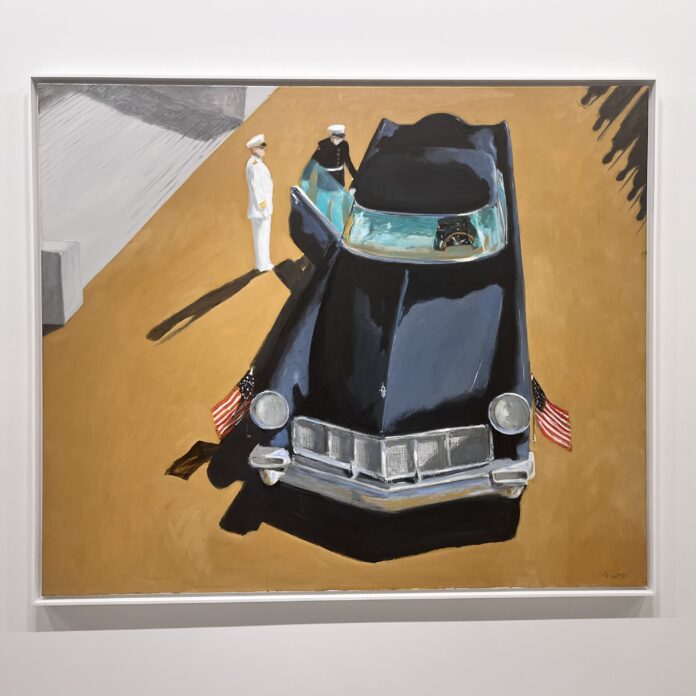The Forum of the Instant:
Tropes and Temporality in the Paintings of
Julio Larraz
Ricardo Pau-Llosa
Throughout his august career, Julio Larraz has consistently and profoundly tackled the manner in which time is signified and grasped in painting. Temporality, or the presence of time in consciousness (or being), may well be the most complex and difficult concept to explore in painting. The first breakthrough came in Diego Velázquez’s Las Hilanderas (1657) with the blur of the loom spokes on the left and those of the young woman’s fingers on the right. The issue seemed clear: time, like the wind, is visible only by its effects, and so motion and its evanescence in sensorial awareness constitute the primary, if not the exclusive, language for the visual representation of temporality. Other Baroque masters, such as Bernini and Rembrandt, also delved into the theme which would harken later to Turner, Goya, Géricault, Delacroix, among others. In the modern era, the concept is central to various abstractionist movements–Informalism, Abstract Expressionism, and Kineticism.
Temporality haunts representational painting in particular because of its focus on the life-world (Edmund Husserl’s term for the reality we share experientially). From Van Gogh and Gauguin to Sargent and Sorolla to the Surrealists and beyond, the struggle to reflect through painting on our consciousness of time endures. Music, literature, and cinema are inextricably grounded in time; hence they offer quite different insights into its dynamics in consciousness. Architecture has an implied temporal component in how we experience buildings by moving around and through them.
R. Pau-Llosa/The Forum of the Instant




